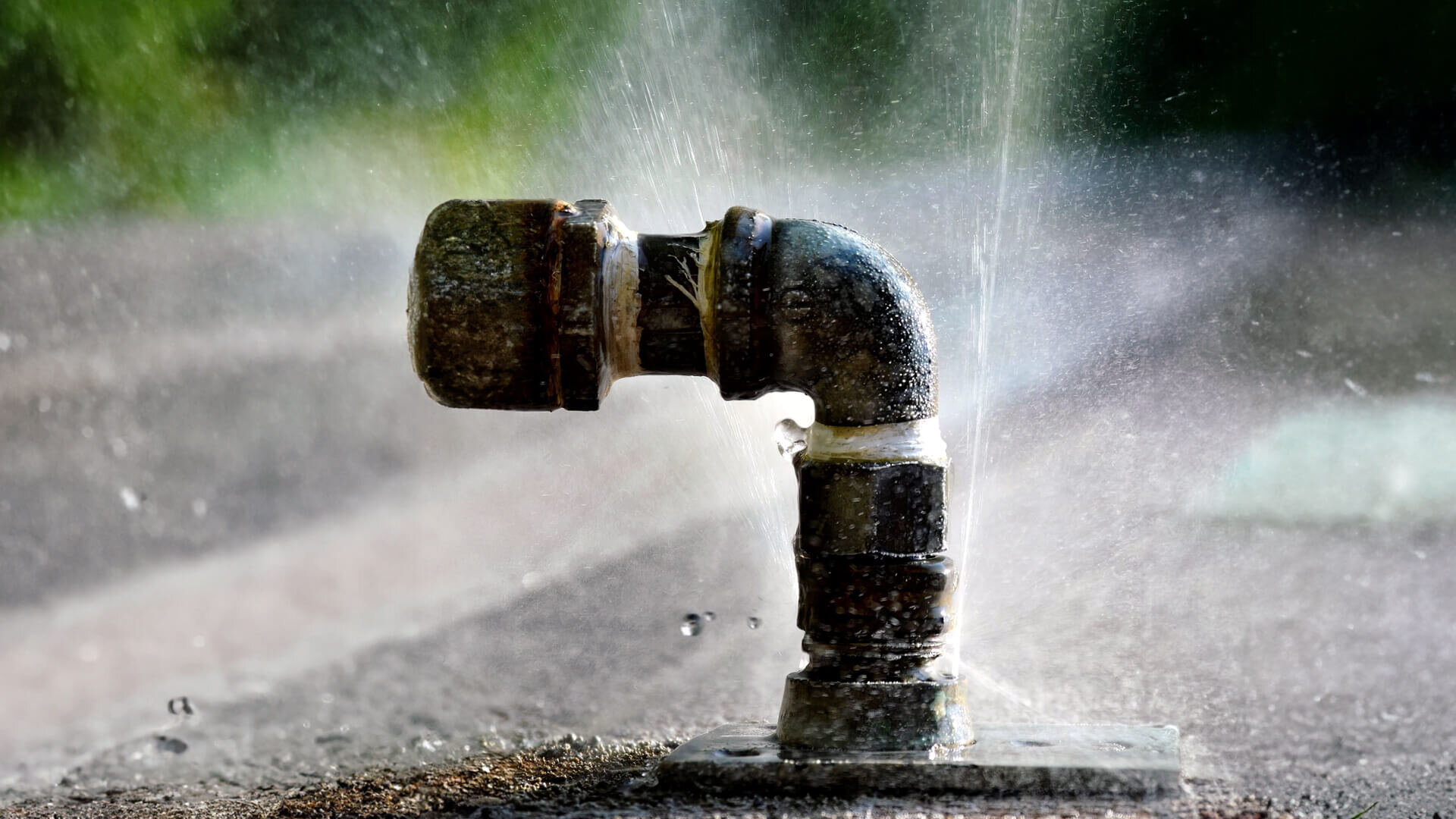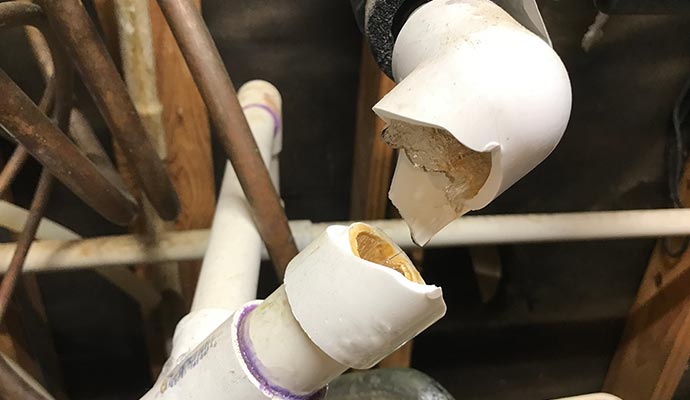What to Do When a Burst Pipe Causes Water Damage in Your Home
What to Do When a Burst Pipe Causes Water Damage in Your Home
Blog Article
What to Do When a Pipeline Bursts: Immediate Steps for House Owners
A pipeline ruptured can be a property owner's worst headache, resulting in considerable damage if not attended to quickly. The instant action is vital: initially, find the source of the leakage and closed off the primary water valve to avoid further flooding. Following this, draining the pipes comes to be important to minimize added concerns.

Assess the Scenario
Begin by determining the source of the leak; this may entail checking the location around the burst pipeline for visible indicators of water getaway. If the burst happened in a hidden space, such as within a wall surface or under a floor, look for water stains or merging that may suggest the location.
Following, evaluate the surrounding environment for hazards. Check for electrical wires that might be exposed to water, as this positions a significant danger of electrocution. Additionally, remember of any type of useful items or furniture that may be at risk of water damage. Comprehending the scale of the situation will certainly help you prioritize your following activities properly.
Documenting the damage via photos can also be advantageous, particularly for insurance policy cases. Time is essential, as standing water can cause mold and mildew development and additional architectural damage. By extensively examining the circumstance, you will certainly be better prepared to take the needed steps to reduce further concerns developing from the burst pipeline.
Shut Off the Water
The prompt concern after identifying a ruptured pipe is to close off the supply of water to prevent more flooding and damage. Situate the primary shut-off shutoff, generally located near the water meter, in the basement, or on an exterior wall surface. Turning this shutoff clockwise will quit the flow of water throughout your home, minimizing the danger of extensive water damages.
If you are unable to discover the major shut-off valve or if it is malfunctioning, you might need to close off individual valves attached to the impacted pipeline, if accessible. Some homes likewise have secondary valves for details appliances, such as cleaning dish washers or machines.
It's a good idea to acquaint yourself with the place of these shutoffs before an emergency happens, as this expertise can save useful time throughout a crisis. In case the primary shutoff is stuck or difficult to turn, do not require it; instead, take into consideration looking for expert aid.
Once the supply of water is shut off, take a moment to evaluate the situation better while getting ready for the following steps, guaranteeing that your home is as safe as feasible from added water breach.
Drain the Pipes
After shutting off the supply of water, it is necessary to drain pipes the pipelines to minimize any kind of continuing to be water that could lead to additional damage. Begin by opening all faucets in the home, beginning with the greatest level to the most affordable. This procedure motivates the water to drain entirely, permitting gravity to aid in getting rid of recurring water from the pipelines.

Be careful when draining pipes warm water, as it can trigger burns. Properly draining the pipes is vital to protecting against further problems and assists secure your home from added water damages throughout this stressful scenario.
Contact an Expert
Following a ruptured pipeline, getting in touch with an expert plumber is crucial to guarantee an extensive evaluation and efficient repair services. Trying to manage the scenario without skilled help can cause additional damages and issues. An accredited plumbing technician possesses the competence and specialized devices required to determine the root cause of the leakage and address it successfully.
When picking a plumbing technician, focus on those with a strong credibility and relevant experience in emergency situation pipes services. Checking online testimonials, getting recommendations, and verifying credentials can aid you make an educated option. It is advisable to contact numerous experts to compare feedback times, approximated expenses, and service offerings.
As soon as you have engaged have a peek at this site a plumbing professional, supply them with as much information as feasible regarding the event, consisting of the place of the burst pipeline and the steps you have actually already taken. This information will certainly assist them in detecting the problem swiftly and properly.
File the Damages
When a plumber has actually been spoken to and the prompt worries dealt with, it is essential to document the damages triggered by the ruptured pipe. This action is important for both insurance claims and potential repair work. Begin by taking clear pictures of the impacted locations, concentrating on noticeable damage to walls, floor covering, and furnishings. Make certain that images catch different angles and distances to give an extensive sight of the situation.
Following, assemble a comprehensive listing of harmed items, including their approximate value and any type of pertinent acquisition information. This inventory must incorporate irreversible fixtures, personal valuables, and any kind of architectural damage observed. Ideally, include the approximated price of repairs based on specialist link assessments or previous quotes for similar work.
In addition to written and aesthetic documents, maintain records of any communications with your plumbing technician and insurance policy provider. By taking these steps, you will certainly be much better prepared to navigate the aftermath of the incident.

Verdict
Immediate analysis of the scenario, followed by shutting off the main water supply, is important. Draining pipes the pipelines and recording the damages makes certain correct handling of the case for insurance purposes.
The immediate priority after identifying a burst pipe is to shut off the water supply to avoid further flooding and damage. Turning this valve clockwise will certainly quit the circulation of water throughout your home, minimizing the threat of considerable water damages.
After closing off the water supply, it is crucial to drain pipes the pipelines to lessen any type of staying water that could lead to additional damage. For homes with a warm water heating system, you need to additionally drain pipes the storage tank by linking a hose pipe to the drain shutoff and routing the water right into an appropriate container this link or outside.
Correctly draining the pipelines is critical to protecting against additional issues and helps safeguard your home from added water damages during this stressful scenario.
Report this page